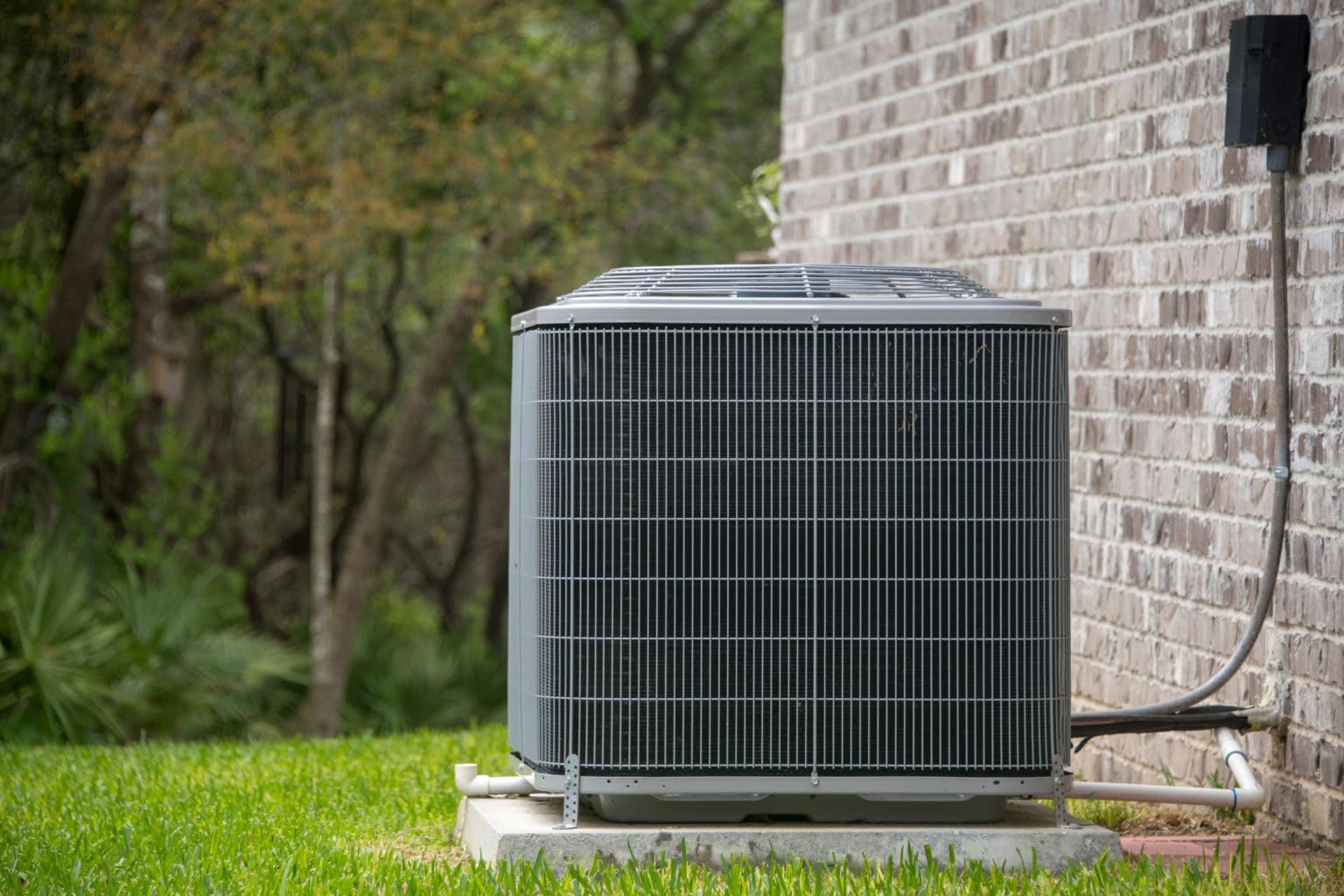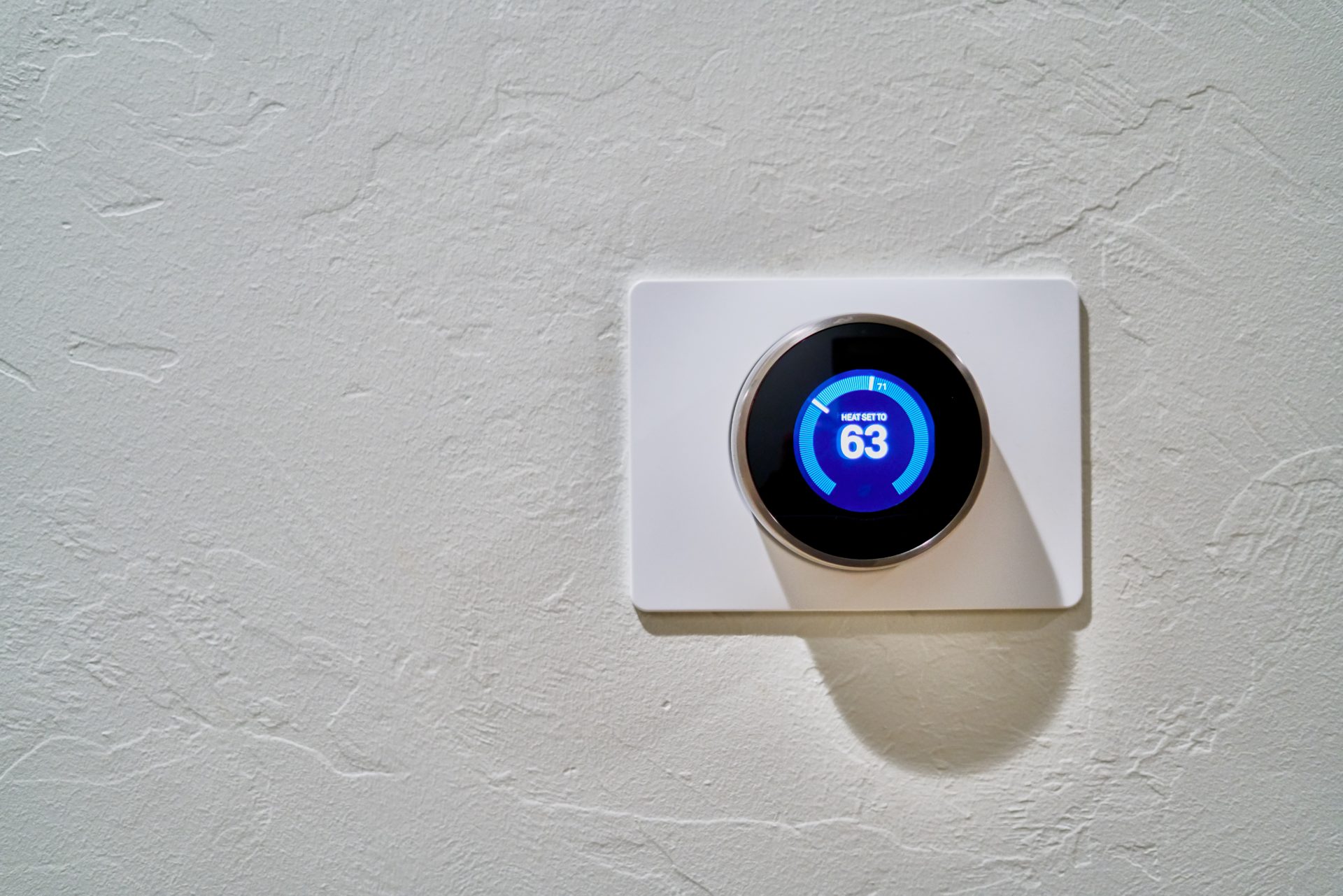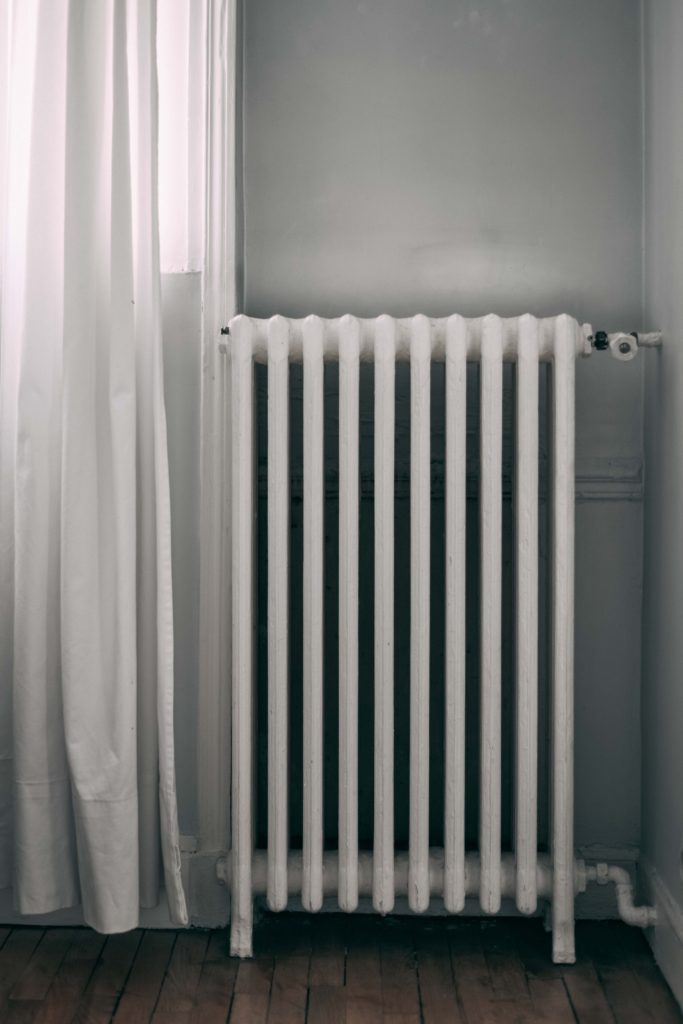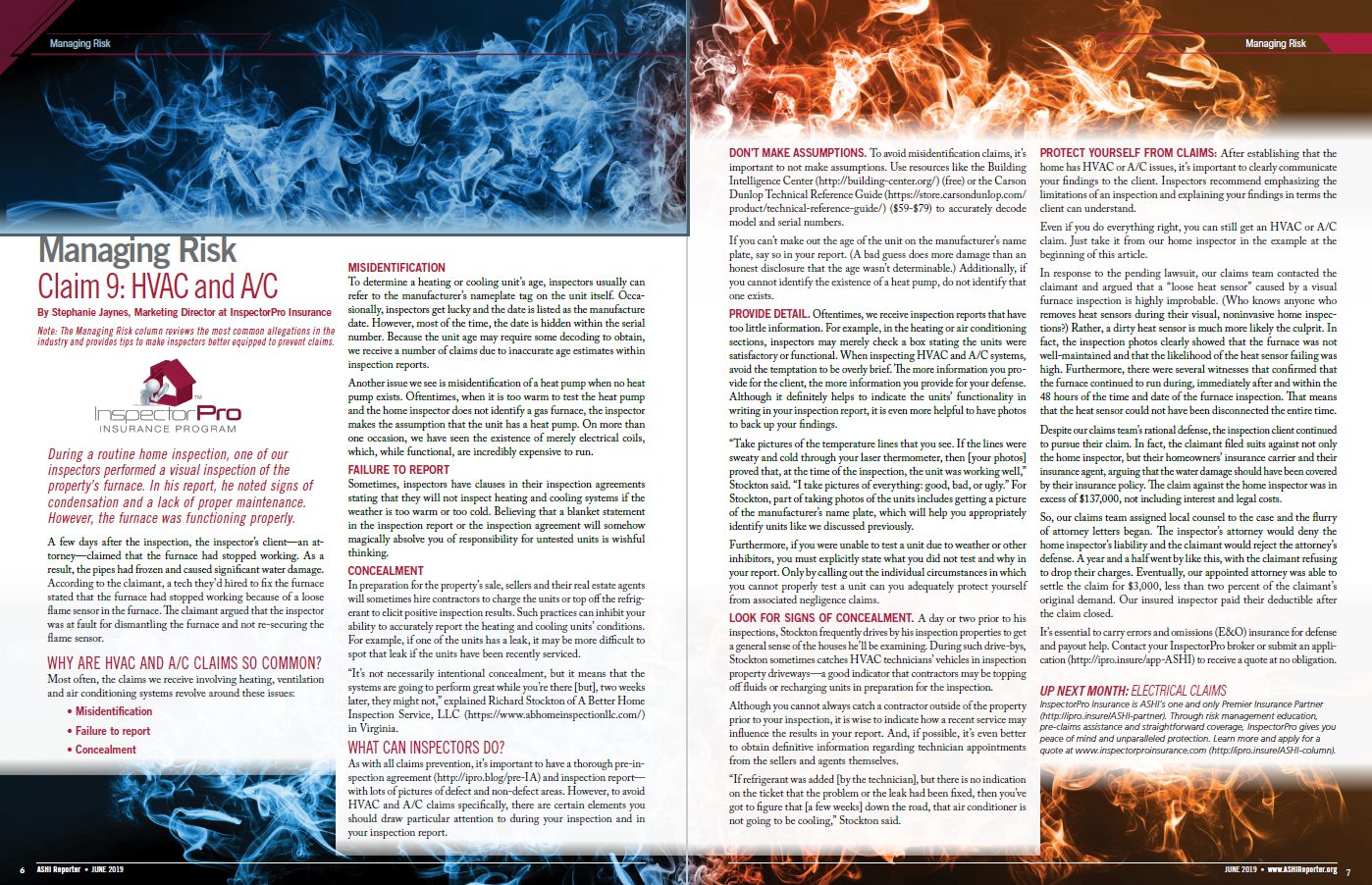Top E&O Claims Claim 9: HVAC and A/C
Last Updated November 22, 2023

During a routine home inspection, one of our inspectors performed a visual inspection of the property’s furnace. In his report, he noted signs of condensation and a lack of proper maintenance. However, the furnace was functioning properly.
A few days after the inspection, the inspector’s client—an attorney—claimed that the furnace had stopped working. As a result, the pipes had frozen and caused significant water damage. According to the claimant, a tech they’d hired to fix the furnace stated that the furnace had stopped working because of a loose flame sensor. The claimant argued that the inspector was at fault for dismantling the furnace and not resecuring the flame sensor.
Why are HVAC and A/C claims so common?
Most often, the claims we receive involving heating, ventilation and air conditioning systems revolve around these issues:
- Misidentification
- Failure to report
- Concealment
 Misidentification
Misidentification
To determine a heating or cooling unit’s age, inspectors usually can refer to the manufacturer’s nameplate tag on the unit itself. Occasionally, inspectors get lucky and the date is listed as the manufacture date. However, most of the time, the date is hidden within the serial number. Because the unit age may require some decoding to obtain, we receive a number of claims due to inaccurate age estimates within inspection reports.
Another issue we see is misidentification of a heat pump when no heat pump exists. Oftentimes, when it is too warm to test the heat pump, and the home inspector does not identify a gas furnace, the inspector makes the assumption that the unit has a heat pump. On more than one occasion, we have seen existence of merely electrical coils, which, while functional, are incredibly expensive to run.
Failure to report
Sometimes, inspectors have clauses in their inspection agreements stating that they will not inspect heating and cooling systems if the weather is too warm or too cold. Believing that a blanket statement in the inspection report or the inspection agreement will somehow magically absolve you of responsibility for untested units is wishful thinking.
Concealment
In preparation for the property’s sale, sellers and their real estate agents will sometimes hire contractors to charge the units or top off the refrigerant to elicit positive inspection results. Such practices can inhibit your ability to accurately report the heating and cooling units’ conditions. For example, it may be more difficult to spot a leak if the units have been recently serviced.
“It’s not necessarily intentional concealment, but it means that the systems are going to perform great while you’re there [and], two weeks later, they might not,” explained Richard Stockton of A Better Home Inspection Service, LLC in Virginia.
What can inspectors do?
As with all claims prevention, it’s important to have a thorough pre-inspection agreement and inspection report—with lots of pictures of defect and non-defect areas. However, to avoid HVAC and A/C claims specifically, there are certain elements you should draw particular attention to during your inspection and in your inspection report.
Don’t make assumptions.
To avoid misidentification claims, it’s important to not make assumptions. Use resources like the Building Intelligence Center (free) or the Carson Dunlop Technical Reference Guide ($59-$79) to accurately decode model and serial numbers.
If you can’t make out the age of the unit on the manufacturer’s name plate, say so in your report. (A bad guess does more damage than an honest disclosure that the age wasn’t determinable.) Additionally, if you cannot identify the existence of a heat pump, do not identify that one exists.
 Provide detail.
Provide detail.
Oftentimes, we receive inspection reports that have too little information. For example, inspectors may merely check a box stating the units were satisfactory or functional. When inspecting HVAC and A/C systems, avoid the temptation to be overly brief. The more information you provide for the client, the more information you provide for your defense.
It definitely helps to indicate the units’ functionality in writing in your inspection report. But, it’s even more helpful to have photos to back up your findings.
“Take pictures of the temperature lines that you see. If the lines were sweaty and cold through your laser thermometer, then [your photos] proved that, at the time of the inspection, the unit was working well,” Stockton said. “I take pictures of everything: good, bad, or ugly.” For Stockton, part of taking photos of the units includes getting a picture of the manufacturer’s name plate. The name plate will help you appropriately identify units like we discussed previously.
Furthermore, if you were unable to test a unit due to weather or other inhibitors, you must explicitly state what you did not test and why in your report. Only by calling out the individual circumstances in which you cannot properly test a unit can you adequately protect yourself from associated negligence claims.
Look for signs of concealment.
Before his inspections, Stockton drives by the properties to get a general sense of the houses he’ll be examining. Stockton sometimes catches HVAC technicians’ vehicles in inspection property driveways. This is a good indicator that contractors may be topping off fluids or recharging units in preparation for the inspection.
You cannot always catch a contractor outside of the property prior to your inspection. However, it is wise to indicate how a recent service may influence the results in your report. And, if possible, it’s even better to obtain definitive information regarding technician appointments from the sellers and agents themselves.
“If refrigerant was added [by the technician] but there is no indication on the ticket that the problem or the leak had been fixed, then you’ve got to figure that [a few weeks] down the road, that air conditioner is not going to be cooling,” Stockton said.
Protect yourself from claims.
After establishing that the home has HVAC or A/C issues, it’s important to communicate your findings to the client well. Inspectors recommend emphasizing the limitations of an inspection and explaining your findings in terms the client can understand.
Even if you do everything right, you can still get a HVAC or A/C claim. Just take it from our home inspector in the example at the beginning of this article.
Resolution
In response to the pending lawsuit, our claims team contacted the claimant and argued that a “loose heat sensor” caused by a visual furnace inspection is highly improbable. Rather, a dirty heat sensor is much more likely the culprit. In fact, the inspection photos revealed that the furnace wasn’t well maintained and that the heat sensor would likely fail. Furthermore, there were several witnesses that confirmed that the furnace continued to run during, immediately after, and within the 48 hours of the time and date of the furnace inspection. That means that the heat sensor could not have been disconnected the entire time.
Despite our claims team’s rational defense, the client continued to pursue their claim. In fact, the claimant filed suits against not only the home inspector but their homeowners’ insurance carrier and agent. The claim against the home inspector was in excess of $137,000, not including interests and legal costs.
So, our claims team assigned local counsel to the case and the flurry of attorney letters began. The inspector’s attorney would deny the home inspector’s liability, and the claimant would reject the attorney’s defense. A year and a half went by like this, with the claimant refusing to drop their charges. Eventually, our appointed attorney settled the claim for $3,000, less than two percent of the claimant’s original demand. Our insured inspector paid their deductible after the claim closed.
It’s essential for home inspectors to carry errors and omissions (E&O) insurance for defense and payout help. Contact your InspectorPro broker or submit an application to receive a home inspection insurance quote at no obligation.
This article was published in the ASHI Reporter in June 2019. See how this story appears in print below.






